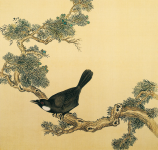Mr E(c)klon (?) continuation ...
The updated
Key now tell us:
eckloni (See: ekloni)
ekloni
Lt. Fedor Leontyevich Eklon (fl. 1882) Russian Army, explorer, collector and preparator with Przhevalsky (Laurent Raty in litt.) (syn. Sitta przewalskii).
But, why he is 'only' mentioned as "(fl. 1882)" is beyond my language skills. According to the Russian page/site that Laurent linked to in post #285 (alt.
here) he,
Федоръ ЛеонтьевичъЭклонъ [
Fedor Leontyevich Eklon]
, seems to have been born in 1857, and "did not die before 1916" (as Laurent wrote it).
Фёдор Леонтьевич Эклон (1857 ...– не ранее 1916 ...)
Reference 11:
Всемирная иллюстрация. № 633 (т. XXV, № 9). 1881 г. С. 167.
Reference 12:
Ф.Л. Эклон – подполковник, пристав 2-го участка Пресненской части. Зацепский вал, 10. – ВсяМосква. 1916 г.
Google translate:
• World illustration. No. 633 (vol. XXV, no. 9). 1881, p. 167.
• F. L. Eklon – lieutenant colonel, bailiff of the 2nd section of the Presnensky unit. Zatsepsky Val, 10. – All Moscow. 1916
To me, with my meager (read non-existing) knowledge of Russian, it looks like he was born in 1857, and that he apparently didn't die (seemingly still alive) until at least in 1916 (according to what seems to be some sort of a Passport registration) ...
Why the hesitation, James?
However, why the Author (
Auctor), amended the name
"Sitta Ekloni into "Sitta Eckloni", if his name truly was Eklon is somewhat harder to understand.

A Russian transcription issue I guess ...
Either way, I will leave the Ecklon/Eklon topic here (simply as he isn't "one of mine", neither he, nor this bird, are incl. in my MS), too many other eponyms to check.
Thus, take it for what it's worth.
Björn
PS. And by the way James, if amended, by the Author/
Auctor himself (in 1883), shouldn't the
Key entry/entries be the other way around?
As in:
ekloni (See:
eckloni) ...
or?
Also note that there's as well a Chinese fish by the name
Gymnocypris eckloni Herzenstein, 1891, and a Beetle
Psilonychus eckloni Burmeister, 1855, etc., etc.
/B








